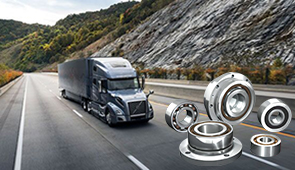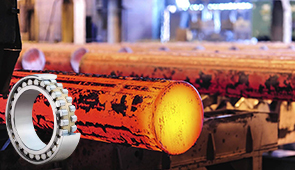Reasons for using bearings
Bearings are used for a variety of purposes. They are found in almost every machine that you use, from your car to your computer. They can also be found in many appliances such as refrigerators and air conditioners. In addition, they are used in many other devices such as toys and tools.
Bearings are used to help reduce friction between two objects that are moving against each other. This reduces wear on the surfaces of the object and allows them to move freely without any resistance from each other. This can be achieved by using a number of different types of bearings depending on the application that is required for the device you are using.
Bearings keep the machine running smoothly.
Bearings are mechanical components that are designed to reduce friction. They are used in various applications, including automobiles, bicycles, heavy machinery and even kitchen appliances. Bearings are commonly made of steel or ceramic materials. Some bearings also contain a lubricant that helps to reduce friction between moving parts.
The main purpose of bearings is to keep the machine running smoothly and quietly. Bearings are also used as part of a system that allows for motion in one direction only; for example, the wheel bearings on your bicycle allow you to pedal forward but not backward. By using bearings, you can increase the efficiency of your equipment and make it last longer before needing repairs.
Bearings can extend the life of equipment.
Bearings are the heart of a machine. They allow parts to turn against each other without binding or causing friction. Bearings allow equipment to operate at higher speeds, lower temperatures and with less noise than would otherwise be possible.
Bearings can extend the life of equipment. They also make it easier to maintain the correct speed and alignment of moving parts, even if they are under load. For example, if your car’s wheel bearings are worn out, you may experience vibration at certain speeds or when going over bumps in the road.
Bearings are used in a wide variety of industries including oil and gas extraction, food processing and pulp and paper manufacturing. They are also used extensively in power generation plants because they help increase efficiency by reducing friction in turbines and generators by up to 50%.
Bearings can improve machine efficiency.
Bearings are used in all types of machinery, from cars and trucks to industrial equipment. They allow the parts of the machine to move freely without friction, wear and tear.
Bearings improve efficiency by reducing wear on other parts of the system such as the motor or gears. For example, if a motor is used to turn a shaft that has no bearings, then it will wear out quickly as it rubs against the shaft. The friction created between these two parts can generate heat which causes more wear and tear on both components.
Bearings also provide support for moving parts by reducing friction between them. This allows for smoother movement and less wear on these components over time.
Bearings support and guide rotating components.
Bearings are used in a variety of mechanical devices, from small handheld tools to large equipment found in factories and heavy industry. They contain and support moving parts and are often used to reduce friction or allow for rotational movement. Bearings can be made from a number of materials including metal alloys, ceramics and plastics.
Bearings may be classified by their construction, which is dependent on the application. There are many types of bearings including sealed bearings, angular contact ball bearings and cylindrical roller bearings. Sealed bearings are designed to minimize the amount of lubricant required and keep out contaminants that could cause wear on the bearing surface. Angular contact ball bearings have a spherical outer race that contacts the raceway of the inner race at an angle rather than perpendicularly as with tapered roller bearings. Cylindrical roller bearings have cylindrical outer rings with rollers running inside them.
The types of loads that need to be supported by a bearing depend on its size and design. For example, a large bearing supporting a rotating shaft will have greater loads placed upon it than a smaller bearing supporting only radial loads (itself). The load capacity of a bearing is determined by its size, geometry, material composition and structural design such as cage.
Bearings reduce friction between components.
Bearings are used in many applications to reduce friction and support loads. Bearings can also provide a means for smooth relative motion between moving parts, allowing the parts to rotate or translate relative to each other. The term “bearing” is often used more narrowly to describe separable mechanical components that facilitate the desired motion, rather than the static structure that holds the parts together.
The general function of bearings is to facilitate the relative motion of two or more parts, known as bearing surfaces, while minimizing wear and energy consumption. Bearings may allow for limited or unrestricted movement, or may be fastened or retained by some means to ensure fixed position and prevent movement or other undesirable behavior. Some bearings are subject to widely varying temperatures and humidities, while others are sealed for life with no lubrication necessary once installed.
Rotating shafts may require regular maintenance due to abrasion as well as heat generation from friction between rolling elements and raceways.
Bearings reduce noise and vibration during machine operation.
Bearings are used in a wide range of applications, including automobiles, aircraft, and construction equipment. In general, bearings are devices that allow the relative motion of two or more surfaces over a period of time. There are many different types of bearings, but they all have one thing in common: they reduce friction between surfaces.
Bearings reduce noise and vibration during machine operation. This is because bearings allow parts to move smoothly without friction and at low speed. If a machine has poor bearings (or none at all), it will make much more noise than one with high quality bearings. In addition to reducing noise, good quality bearings also extend the life of machines by allowing them to run smoothly over long periods of time without wearing out prematurely. The lower the amount of friction in a machine’s parts, the longer those parts will last before needing repair or replacement.
All bearings are are used to reduce friction and to guide an object. They can be used to transfer power as well. Bearings are designed in a way that they do not crush or break under mechanical stress. Generally, they are easy to maintain, repair and replace. They are durable components that are essential parts of machine systems.
UCTH213-40J-300 with Setscrew(inch)
CNSORDERNO: Normal-duty(2)
TOGN: UCTH213-40J-300
SDI: B-R1/8
SD: 2 1/2
UCTH212-39J-300 with Setscrew(inch)
CNSORDERNO: Normal-duty(2)
TOGN: UCTH212-39J-300
SDI: B-R1/8
SD: 2 7/16
UCTH212-38J-300 with Setscrew(inch)
CNSORDERNO: Normal-duty(2)
TOGN: UCTH212-38J-300
SDI: B-R1/8
SD: 2 3/8
UCTH212-36J-300 with Setscrew(inch)
CNSORDERNO: Normal-duty(2)
TOGN: UCTH212-36J-300
SDI: B-R1/8
SD: 2 1/4
UCTH211-35J-300 with Setscrew(inch)
CNSORDERNO: Normal-duty(2)
TOGN: UCTH211-35J-300
SDI: B-R1/8
SD: 2 3/16
UCTH211-34J-300 with Setscrew(inch)
CNSORDERNO: Normal-duty(2)
TOGN: UCTH211-34J-300
SDI: B-R1/8
SD: 2 1/8


















